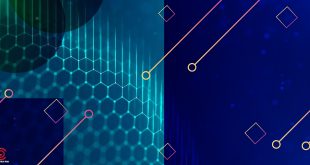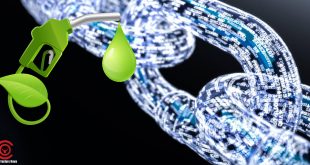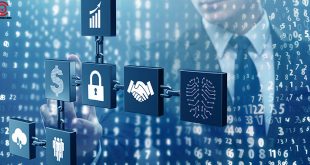Blockchain oracles prevail to drive innovation in the latest and exciting ways. Oracles are mainly third-party data monitoring protocols or hardware that offer blockchain networks entry to external data. Oracles enable blockchains to be more agile and responsive to the scenario of their environment. As such, oracles are now among the most intriguing areas of blockchain development.
What Are Oracles?
Before the innovation of Oracles, the blockchain and the real world were detached. Smart contracts were not able to monitor real-world data in a reliable scenario. This inability to avail outside parameters restricted the capabilities of blockchain networks greatly.
Significantly, oracles are the missing connection between outside parameters and blockchain activities. In this way, any significant data gathered from outside the blockchain can ignite smart contracts. These sensors raise the effectiveness and responsiveness of blockchains. Specifically, smart contract capabilities get a huge boost from this upending technology. Luckily, thanks to raised adoption, oracles are presently at the forefront of blockchain development.
Oracles And Nodes
In technical terms, data that is sent from the oracle goes directly to the nodes. Here, the nodes fulfill a couple of operations. These operations involve the authentication and verification of the data received. Top blockchain oracle list include:
- Chainlink (LINK)
- Universal Market Access (UMA)
- WINklink (WIN)
- Band Protocol (Band)
- iExec Cloud Platform (RLC)
Blockchain Oracle Example
For instance, Alice and Bob place a bet on who will be the winner of the next US Presidential election. Alice thinks that the Republican candidate will be the winner, while Bob thinks that the Democrat will win. They agree on the terms of the bet and they lock their funds in a smart contract, which will free all the funds to the winner based on the outcomes of the election.
Since the smart contract is unable to interact with external data, it has to rely on an oracle to cater to the required data which in this case, is the outcome of the presidential election. After the election is finished, the oracle queries a trusted API (Application Programming Interface) to find out who has won and communicates this data to the smart contract. The contract then sends the funds to Bob or Alice, relying on the outcome.
Without the oracle communicating the data, there would have been no way to resolve this bet in a way that could not be gamed by one of the participants.
What Are The Different Types Of Blockchain Oracles?
Blockchain oracles can be distinguished depending on a number of varied qualities. Here are the various types of blockchain oracles.
- Source – does the information originate from hardware or software?
- The direction of data – is the date outbound or inbound?
- Trust – is the data decentralized or centralized?
A single blockchain oracle can fall into several categories. For instance, an oracle that sources data from a company website is primarily a centralized inbound software oracle.
Software Oracles
Software oracles communicate with online sources of data and transmit it to the blockchain. This data can come from online databases, websites, servers, and essentially, any data source on the internet.
Hardware Oracles
Some smart contracts are required to interface with the real world. Hardware oracles are created to receive data from the physical world and make it accessible to smart contracts. Such data could be communicated from electronic sensors, barcode scanners, and also other data reading devices.
Inbound And Outbound Oracles
Inbound oracles navigate data from external sources to smart contracts, while outbound oracles send data from smart contracts to the external space.
An instance of an inbound oracle is one that narrates a smart contract in which the temperature is calculated by a sensor. An instance of an outbound oracle can be examined with a smart lock. If funds are stored to an address, the smart contract sends this data via an outbound oracle to a mechanism that unlocks the smart lock.
Centralized And Decentralized Oracles
A centralized oracle is managed by a single entity and it is also the sole provider of data for the smart contract. Using only one source of data can be risky and the effectiveness of the contract relies completely on the entity managing the oracle. Also, any malicious activities from a bad actor will have a straight impact on the smart contract. The main blockchain oracle problem with centralized oracles is the prevalence of a single point of failure, which makes the contracts less resilient to attacks and vulnerabilities.
Decentralized oracles networks on the other hand share some of the same objectives as public blockchains by avoiding counterparty risk. They raise the reliability of the data offered to smart contracts by not depending on one source of truth. The smart contract queries several oracles to evaluate the accuracy and validity of the data and this is the reason decentralized oracles can also be termed as consensus oracles.
Wrapping Up
A reliable instrument that supports communication between the external world and smart contracts is important to the global adoption of blockchains. Without blockchain oracles, smart contracts would have to depend only on data already inside their networks, which would considerably restrict their capabilities.
Decentralized oracles have the ability to introduce protective mechanisms that could discard a lot of systemic risk from the blockchain space. Blockchain oracles remain among the important building blocks to be enacted in a reliable, secure, and trustless manner for the blockchain ecosystem to evolve.
- AI Blockchain Projects: 8 Effective Ventures To Know Now - 03/08/2024
- Hyperledger Fabric: Why Has It Become So Famous? - 03/08/2024
- Ethereum Name Service: An Easy Step-By-Step Guide For You - 03/08/2024
 Crypto Venture News One stop Crypto Track Down
Crypto Venture News One stop Crypto Track Down 






